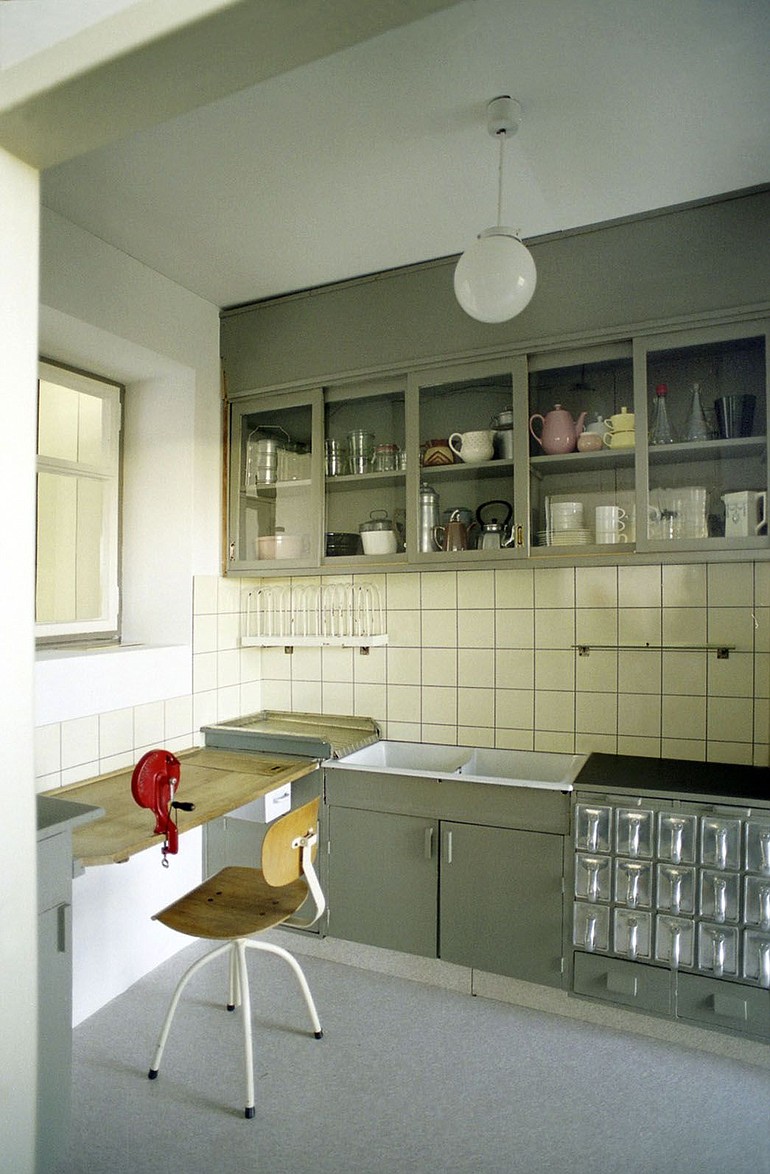NEW YORK — The kitchen, once tucked away in the basement or a back annex, became a laboratory of modern design in the 20th century. It became a showcase for consumer culture and a symbol of changing gender roles.
The changing kitchen is the focus of an exhibit now at the Museum of Modern Art called “Counter Space: Design and the Modern Kitchen.”
It comprises almost 300 works, all from the museum’s collection, including design objects, architectural plans, posters, photographs, archival films, prints and paintings.
The inspiration was the acquisition last year of the “Frankfurt Kitchen,” on view for the first time at the Modern. Designed by German modernist architect Margarete Schutte-Lihotzky from 1926-1927, it was one of about 10,000 kitchens built as part of an affordable housing initiative in Frankfurt after World War I.
The Frankfurt Kitchen exemplifies the early 20th century belief in the transformative power of design, particularly as a way to transform the lives of working people. Compact and ergonomic, it integrated appliances, work and storage space in a new way.
“The design embodies the concerns of the modern movement: efficiency, hygiene, standardization and social concerns,” says the show’s curator, Juliet Kinchin. It also is the museum’s earliest work by a woman architect.
Another example of standardization on display: the brown paper bag. The flat-bottomed paper grocery bag was developed in the 1870s and 1880s by Margaret Knight and Charles Stilwell.
The show also features a lithograph from Frank Lloyd Wright’s “American System-Built Houses,” a folio in which he illustrated different ways to configure factory-produced, standardized building components.
After World War II, a burgeoning consumer culture in the United States was fed by corporations that capitalized on wartime research into new materials and technologies. Kitchen products such as the Tupper Corporation’s nesting refrigerator bowls and the Chemex Coffee Maker were symbols of an economic boom that contrasted with the postwar deprivations in Europe.
Photographs of the 1959 “Kitchen Debate” between President Nixon and Soviet leader Nikita Khrushchev exemplify the political implications of the sleek, 20th century American kitchen.
In the 1950s, kitchens were still considered the domain of women, but there was interest in making the work easier. An article on display titled “New Kitchen Built to Fit Your Wife” (Popular Science, September 1953) describes a test kitchen developed at Cornell University’s Housing Research Center in 1952 to ease work based on time-motion studies.
The re-emergence of European design during the 1960s and ’70s is highlighted by “Spazio Viva,” a hinged, mobile kitchen on castors that incorporates a stove, small refrigerator, pullout cutting board and storage space. It was designed in 1968 by Virgilio Forchiassin for the Italian company Snaidero, and is “a kind of Frankfurt Kitchen for a younger, more affluent generation. And you can take it with you when you move,” Kinchin says.
The “Counter Space” exhibit ends with examples of how contemporary artists have used the kitchen as a backdrop for statements about gender, economics and politics. Those include Cindy Sherman’s film stills with groceries in a kitchen, William Eggleston’s photographs of the inside of an oven and freezer, and Laurie Simmons’ photos of dollhouse scenes, which she has said express feelings about domestic life.
“It’s interesting for me that a picture can be so colorful and so bright and so vivacious and so lonely at the same time,” Simmons has said.
“Counter Space” runs through March 14.



